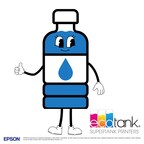
Heat And Energy Recovery Ventilation System Market size to increase by USD 1.77 billion during 2023-2028, Rising demand for heat and energy recovery ventilation systems due to awareness of indoor air quality to drive the growth – Technavio
NEW YORK, Dec. 14, 2023 /PRNewswire/ — The heat and energy recovery ventilation system market size is expected to grow by USD 1.77 billion between 2023 and 2028. However, the growth momentum of the market will progress at a CAGR of 8.17% during the forecast period. The market is segmented by Type (Ceiling-mounted, Wall-mounted, and Cabinet-mounted), End-user (Commercial, Residential, and Industrial), and Geography (North America, Europe, APAC, South America, and Middle East and Africa). The rising demand for heat and energy recovery ventilation systems due to awareness of indoor air quality drives market growth. There is a rising recognition of the significance of clean indoor air quality and thus, there is a growing need for systems that offer both excellent air filtration and effective ventilation. The heat and energy recovery ventilation system presents a convincing alternative that lowers energy expenses by recovering heat or energy from the exhausted interior air and bringing in fresh outdoor air. The report analyses the market size and growth and provides accurate predictions on the growth of the market. View a Free PDF Sample
Key Highlights:
The report recognizes the following as some of the key players in the heat and energy recovery ventilation system market: Airxchange Inc., Carrier Global Corp., Daikin Industries Ltd., Dais Corp., Fujitsu General Ltd., Greenheck Fan Corp., Johnson Controls International Plc, Lennox International Inc., LG Electronics Inc., Loren Cook Co., Mitsubishi Electric Corp., Munters Group AB, Nortek Air Solutions LLC, Ostberg Group AB, Panasonic Holdings Corp., Paschal Air Plumbing and Electric., S and P SISTEMAS DE VENTILACION S.L.U., Trane Technologies plc, Zehnder Group AG, and KARYER Heat Transfer San. and Tic. Inc.Heat and Energy Recovery Ventilation System Market is fragmented in nature.Market to observe 7.66% YOY growth in 2024.
Market Dynamics:
Trend
The integration of heat and energy recovery ventilation systems with smart building technologies and the Internet of Things is an emerging market trend.This integration is led by the growing need for sustainable and energy-efficient building solutions.Ventilation systems can adjust to changing conditions in real time, maximize air quality, and use less energy as a result of the added sensors and automation.For instance, smart ventilation solutions, like those offered by Panasonic, employ the IoT to analyze data about indoor air quality and make automated, exact ventilation adjustments.
Challenge
The significant upfront expenses are hampering the market growth. This cost is attributed to installing energy recovery ventilation and heat systems.The energy efficiency and indoor air quality of these systems are intended to be improved, however, the initial costs of purchase and installation may be substantial.For instance, the price of a household unit may be anywhere from USD 1,500 to USD 5,000, but the cost of an industrial or commercial installation could reach tens of thousands of dollars.
The report also covers information on upcoming trends and challenges. Explore detailed information by purchasing the report
Keg Segments:
The ceiling-mounted segment is significant during the forecast period. This popularity can be attributed to the adaptability, efficiency, and compact design of ceiling-mounted heat and energy recovery ventilation systems. Centralized positioning helps the efficient dispersion of conditioned air, as they minimize visual effects in living spaces and guarantee improved air quality in residential situations. Get a glance at the market contribution of the segments, Request a FREE Sample
The Heat and Energy Recovery Ventilation System Market is witnessing substantial growth due to the escalating demand for energy-efficient and sustainable HVAC solutions. These systems play a pivotal role in enhancing indoor air quality while significan
tly reducing energy consumption in buildings.
Heat recovery ventilation (HRV) and energy recovery ventilation (ERV) systems are at the forefront of sustainable building solutions. They facilitate efficient air exchange by recovering and transferring heat or energy between the incoming fresh air and the outgoing exhaust air. This process occurs through heat exchangers like cross-flow heat exchangers, plate heat exchangers, and thermal wheels.
These ventilation units utilize innovative technologies to ensure optimal thermal recovery and energy conservation, maximizing the ventilation rate while minimizing energy loss. ERV technology, in particular, showcases remarkable energy recovery efficiency, contributing to green building initiatives and eco-friendly ventilation practices.
The incorporation of ERV and HRV systems involves the integration of advanced ventilation ducts, air handling units, and ductwork designed for efficient heat transfer and thermal recovery. These systems often incorporate air filtration mechanisms to ensure improved indoor air quality by filtering pollutants and contaminants.
Moreover, the market is witnessing a surge in demand for building automation solutions that seamlessly control climate settings, optimizing the performance of heat pumps and supporting sustainable HVAC operations.
Overall, the Heat and Energy Recovery Ventilation System Market is evolving to meet the increasing emphasis on energy efficiency, sustainability, and superior indoor air quality in various residential, commercial, and industrial settings.
Advancements and Components in Heat and Energy Recovery Ventilation Systems
Ventilation Units and Components: Heat recovery ventilation (HRV) and energy recovery ventilation (ERV) systems comprise various components essential for their efficient operation. These include air handling units designed to manage the air exchange process, ventilation ducts ensuring the proper flow of air, and specialized ductwork optimized for thermal recovery.Innovative Heat Exchangers: Cross-flow heat exchangers and plate heat exchangers are integral parts of these systems. They facilitate heat transfer between the incoming fresh air and the outgoing exhaust air, significantly contributing to energy conservation and maintaining indoor air quality.Advanced Technologies: ERV technology has undergone significant advancements, enhancing energy recovery efficiency in ventilation systems. The integration of thermal wheels further improves the overall efficiency by enabling continuous heat exchange between the incoming and outgoing air streams.Optimizing Fresh Air Intake: Fresh air intake is a crucial aspect of these systems, ensuring a continuous supply of clean air while efficiently managing exhaust air. This process not only supports energy efficiency but also contributes to maintaining optimal indoor air quality.Climate Control and Sustainable HVAC: Sustainable building practices prioritize climate control through energy-efficient HVAC systems. Heat pumps play a pivotal role in this context, leveraging heat transfer mechanisms to regulate temperatures effectively while minimizing energy consumption.Air Filtration and Indoor Air Quality: The inclusion of air filtration mechanisms within ventilation systems is vital for improving indoor air quality. This ensures that pollutants and allergens are filtered out, promoting a healthier environment within buildings.Green Building Initiatives: The increasing focus on green building initiatives has spurred the adoption of eco-friendly ventilation practices. Energy conservation through these systems aligns with sustainable building standards and contributes to reducing the carbon footprint of structures.Automation and Control: Building automation technologies are being integrated to optimize the performance of heat and energy recovery ventilation systems. This automation streamlines operations, allowing for precise control over ventilation rates and settings to maximize efficiency.
These elements collectively drive the evolution of sustainable HVAC practices, emphasizing energy recovery, enhanced air quality, and efficient ventilation solutions in modern buildings and industries.
The report provides detailed insights on Heat recovery ventilation, HVAC (Heating, Ventilation, and Air Conditioning), Air exchange, Ventilation unit, Cross-flow heat exchanger, Plate heat exchanger, Thermal wheel, Fresh air intake, Exhaust air, Energy conservation, Building automation, Energy recovery efficiency, Ventilation ducts, Climate control, Heat pump, Air handling unit, Ductwork, Ventilation rate, ERV (Energy Recovery Ventilation) technology and Eco-friendly ventilation. Download the sample report
Related Reports:
The roofing ventilation products market size is estimated to grow at a CAGR of 5.22% between 2022 and 2027. The market size is forecast to increase by USD 1,172.16 million.
The industrial HVAC market is estimated to decline at a CAGR of 6.5% between 2022 and 2027. The size of the market is forecast to increase by USD 4,714.13 million.
Heat And Energy Recovery Ventilation System Market Scope
Report Coverage
Details
Base year
2023
Historic period
2017-2021
Forecast period
2024-2028
Growth momentum & CAGR
Accelerate at a CAGR of 8.17%
Market growth 2024-2028
USD 1.77 billion
Market structure
Fragmented
YoY growth 2022-2023 (%)
7.66
Regional analysis
North America, Europe, APAC, South America, and Middle East and Africa
Performing market contribution
North America at 38%
Key countries
US, Canada, China, Japan, and UK
Competitive landscape
Leading Vendors, Market Positioning of Vendors, Competitive Strategies, and Industry Risks
Key companies profiled
Airxchange Inc., Carrier Global Corp., Daikin Industries Ltd., Dais Corp., Fujitsu General Ltd., Greenheck Fan Corp., Johnson Controls International Plc, Lennox International Inc., LG Electronics Inc., Loren Cook Co., Mitsubishi Electric Corp., Munters Group AB, Nortek Air Solutions LLC, Ostberg Group AB, Panasonic Holdings Corp., Paschal Air Plumbing and Electric., S and P SISTEMAS DE VENTILACION S.L.U., Trane Technologies plc, Zehnder Group AG, and KARYER Heat Transfer San. and Tic. Inc.
Market dynamics
Parent market analysis, Market growth inducers and obstacles, Fast-growing and slow-growing segment analysis, COVID-19 impact and recovery analysis and future consumer dynamics, Market condition analysis for the forecast period.
Customization purview
If our report has not included the data that you are looking for, you can reach out to our analysts and get segments customized.
ToC:
Executive Summary
Market Landscape
Market Sizing
Historic Market Sizes
Five Forces Analysis
Market Segmentation by Type
Market Segmentation by End-user
Market Segmentation by Geography
Customer Landscape
Geographic Landscape
Drivers, Challenges, & Trends
Company Landscape
Company Analysis
Appendix
About Technavio
Technavio is a leading global technology research and advisory company. Their research and analysis focus on emerging market trends and provide actionable insights to help businesses identify market opportunities and develop effective strategies to optimize their market positions.
With over 500 specialized analysts, Technavio’s report library consists of more than 17,000 reports and counting, covering 800 technologies, spanning 50 countries. Their client base consists of enterprises of all sizes, including more than 100 Fortune 500 companies. This growing client base relies on Technavio’s comprehensive coverage, extensive research, and actionable market insights to identify opportunities in existing and potential markets and assess their competitive positions within changing market scenarios.
Contacts
Technavio Research
Jesse Maida
Media & Marketing Executive
US: +1 844 364 1100
UK: +44 203 893 3200
Email: media@technavio.com
Website: www.technavio.com/
View original content to download multimedia:https://www.prnewswire.com/news-releases/heat-and-energy-recovery-ventilation-system-market-size-to-increase-by-usd-1-77-billion-during-2023-2028–rising-demand-for-heat-and-energy-recovery-ventilation-systems-due-to-awareness-of-indoor-air-quality-to-drive-the-growth—-302015867.html
SOURCE Technavio






